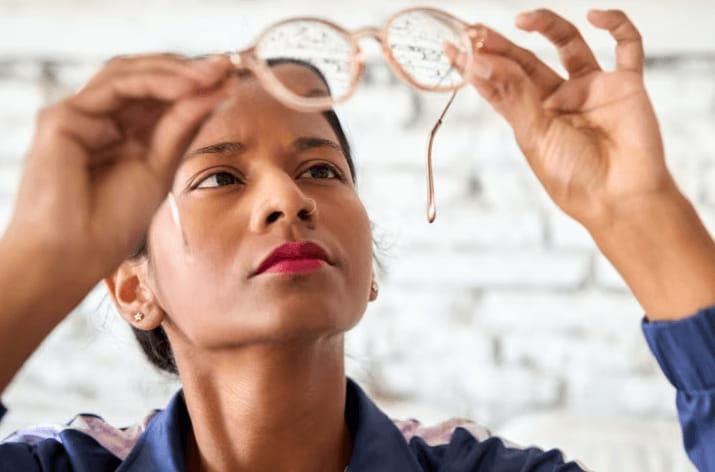- Thriving Guide
- Posts
- How to Choose the Right Reading Glasses
How to Choose the Right Reading Glasses
A simple guide to choosing the right readers for your vision needs.

Noticing that you’re squinting to read books, menus, or your phone? It may be time to consider reading glasses. While over-the-counter (OTC) readers are widely available, choosing the right pair involves more than just picking a style you like. Your eye health, lifestyle, and the strength of the lenses all play an important role.
Schedule an Eye Exam
Vision changes around the age of 40 are often due to presbyopia, an age-related condition where the eye’s lens becomes less flexible, making it harder to focus on close objects.
Before buying readers, see an eye doctor to:
Rule out serious eye conditions that cause blurry vision.
Determine if you need OTC readers or prescription lenses.
Your provider may recommend OTC glasses if your vision changes are mild and not related to other vision problems.
Choosing Over-the-Counter Reading Glasses
OTC readers work by magnifying what you see, helping you read small print more easily. They’re affordable often under $20 and are widely available in drugstores, bookstores, and online. Many people keep multiple pairs in places like their office, kitchen, or car for convenience.
For best results, keep a lens-cleaning cloth or solution handy, just as you would with prescription lenses.
What Strength Do You Need?
Reading glasses come in strengths (diopters) ranging from +1.00 to +4.00, typically in 0.25 increments. Your provider can tell you the exact strength you need, but here’s a general guide by age:
Early 40s: +1.00
Mid-40s: +1.25 to +1.50
Late 40s to early 50s: +1.50 to +1.75
Mid-50s: +1.75 to +2.00
Late 50s: +2.00 to +2.25
Early 60s: +2.25 to +2.50
Mid-60s and older: +2.50 to +3.00
Keep in mind that job tasks or hobbies like working on a computer or sewing may require slightly different strengths.
When Prescription Glasses Are Better
OTC readers are one-size-fits-all and don’t correct for issues like astigmatism or different strengths in each eye. Prescription reading glasses are custom-made to match your exact needs, ensuring the optical center of the lens aligns with your pupils, reducing headaches and eye strain.
You’ll need prescription lenses if you:
Are nearsighted (OTC lenses only come with “+” magnification).
Need high-quality lenses without distortion or waves.
Want a precise fit for maximum comfort.
Can You Wear Readers With Contact Lenses?
Yes. If you wear contacts for distance vision or astigmatism, you can pair them with OTC readers for close-up tasks like reading or crafting.
Key Takeaways
Schedule an eye exam before buying reading glasses to ensure your vision changes are not caused by an underlying eye condition.
OTC readers are affordable and convenient but are best for mild age-related vision changes.
Prescription reading glasses may be necessary for custom vision correction or if you have other eye conditions.
Share this article or subscribe to our newsletter for more health tips.